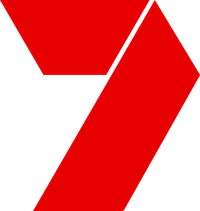Select grade below
- Round 2Sat, 12 Apr 20252:30 PM
 VS
VS Revo Fitness Stadium
Revo Fitness Stadium - Round 3Fri, 18 Apr 20257:10 PM
 VS
VS Sullivan Logistics Stadium
Sullivan Logistics Stadium - Round 4Fri, 25 Apr 20251:40 PM
 VS
VS Revo Fitness Stadium
Revo Fitness Stadium - Round 5Fri, 2 May 20257:10 PM
 VS
VS Joondalup Arena
Joondalup Arena - Round 6Sat, 10 May 20252:30 PM
 VS
VS Revo Fitness Stadium
Revo Fitness Stadium - Round 7Sat, 24 May 20252:30 PM
 VS
VS Steel Blue Oval
Steel Blue Oval - Round 8Sat, 31 May 20252:30 PM
 VS
VS Revo Fitness Stadium
Revo Fitness Stadium - Round 9Sat, 7 Jun 20254:10 PM
 VS
VS Sullivan Logistics Stadium
Sullivan Logistics Stadium - Round 11Sat, 21 Jun 20252:30 PM
 VS
VS Revo Fitness Stadium
Revo Fitness Stadium - Round 12Sat, 28 Jun 202511:10 AM
 VS
VS Mineral Resources Park
Mineral Resources Park - Round 13Sat, 5 Jul 20251:45 PM
 VS
VS Fremantle Community Bank Oval
Fremantle Community Bank Oval - Round 15Sat, 19 Jul 20252:30 PM
 VS
VS Revo Fitness Stadium
Revo Fitness Stadium - Round 16Sat, 26 Jul 20252:30 PM
 VS
VS East Fremantle Oval
East Fremantle Oval - Round 17Sat, 2 Aug 20252:30 PM
 VS
VS Revo Fitness Stadium
Revo Fitness Stadium - Round 18Sat, 9 Aug 20252:30 PM
 VS
VS Revo Fitness Stadium
Revo Fitness Stadium - Round 19Sat, 16 Aug 20252:30 PM
 VS
VS Mineral Resources Park
Mineral Resources Park - Round 20Sat, 23 Aug 20252:30 PM
 VS
VS Revo Fitness Stadium
Revo Fitness Stadium
OUR INDIGENOUS HISTORY

Ninety years ago, Maley Hayward ventured from Tambellup to the city and had the distinction of being the first Aboriginal player to represent Claremont in league football.
Though not particularly tall, he excelled at centre-half-back and centre-half-forward in all of Claremont’s 18 matches in 1928 before he returned to the country the following year to continue his career with Broomehill.
It was not until 1958 that another Aboriginal footballer --- Irwin Lewis --- lined up in league ranks for the Tigers and since then the club has enjoyed a wonderful association with indigenous players.
Lewis made 75 league appearances for Claremont before his sons, Clayton (25 matches), Cameron (92) and Chris (53) followed in his footsteps, with Chris, a Claremont WAFL premiership player in 1996, also playing 215 AFL matches for the West Coast Eagles, including premiership successes in 1992 and 1994, being club champion in 1990 and earning all-Australian honours that season.
Claremont, a proud trendsetter in Western Australian football, has also been at the forefront of a wonderful pathway to the WAFL and AFL for indigenous players over the past 60 years. The club has embraced hundreds of young Aboriginal men, as well as players from a variety of backgrounds and all walks of life, giving them a purpose in life, developing their skills as footballers and, most importantly, guiding them along the path to become responsible citizens.
There was a notable influx of Aboriginal players at Claremont in the mid to late 1970s and these included the fabulously gifted brothers Jim and Phil Krakouer from Mount Barker. They were members of Claremont’s 1981 WAFL premiership side before being recruited by North Melbourne.
And since then Tigers fans have watched, enthralled, at the sheer brilliance of dozens of Aboriginal stars, including brothers Michael and Kevin Mitchell (with Michael winning the Sandover Medal in 1984 and Kevin playing in three league premiership sides), Larry, Derek and Dale Kickett, Gavin Mitchell, Joe Smith, Clinton Wolf, Scott Chisholm, Brett and Dean Farmer, Joe Ahmat, Gilbert McAdam, Neil Marshall, Laurie Bellotti, Geoff Narkle, Andrew Taylor and Doug Roberts.
The Mitchells came from Carnarvon and the other above-mentioned players came variously from the city, the wheatbelt, the South-West and the Great Southern areas.
Then, it was in November 2004 that Claremont applied for and received the previously unzoned Kimberley region --- and within four years seven youngsters from Claremont’s Kimberley zone were drafted by AFL clubs. They were Carl Peterson, Clint Benjamin, Josh Hill, Liam Bedford, Warren Benjamin, Alroy Gilligan and Casey Sibasado. In those four years 32 players from the club’s Kimberley zone represented the Tigers, and since then there has been a steady flow of young Kimberley men to Claremont.
The Claremont Football Club set up this pathway with the assistance of the WA Football Commission, Garnduwa, and the Clontarf academy.
This successful scheme was, and still is, providing the boys and young men of the Kimberley, particularly the indigenous youth living in remote areas, a wonderful catalyst to realise their sporting ambitions.
Claremont also established permanent accommodation in association with the WA Government and Aboriginal Housing Services. At this house in Mt Claremont the club supplies a guardian to cook, clean and support the Indigenous lads who are playing colts, reserves and league football with the Tigers.
Claremont’s other country zone is the Great Southern, and this continues to supply the club with many outstanding young footballers, including many indigenous lads.
Aboriginal players who have excelled for the Tigers in recent years include Nathan Krakouer, Francis Watson, Sam Petrevski-Seton, Shane McAdam, Matt Palfrey, Steven Edwards, Eric Benning, Anthony Treacy, Jason Carter, Lawrence Evans & Keifer Yu who in 2018 became the second indigenous player to play 100 games for Claremont and the first from our Kimberley zone.
Ken Casellas










